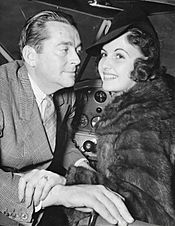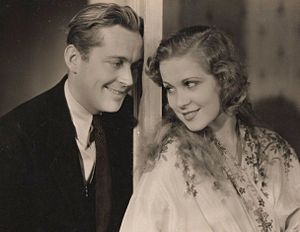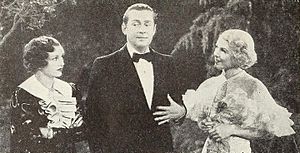James Dunn (actor) facts for kids
Quick facts for kids
James Dunn
|
|
|---|---|
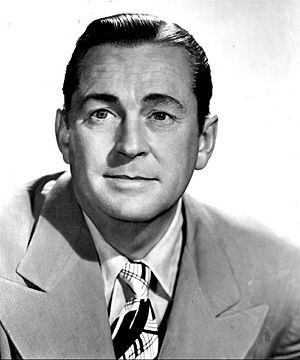
|
|
| Born |
James Howard Dunn
November 2, 1901 Manhattan, New York, U.S.
|
| Died | September 1, 1967 (aged 65) |
| Occupation | Actor, vaudeville performer |
| Years active | 1927–1966 |
| Spouse(s) |
[unknown]
(div. 1922)Edna Rush
(m. 1945–1967) |
James Howard Dunn (November 2, 1901 – September 1, 1967), billed as Jimmy Dunn in his early career, was an American stage, film, and television actor, and vaudeville performer. The son of a New York stockbroker, he initially worked in his father's firm but was more interested in theater. He landed jobs as an extra in short films produced by Paramount Pictures in its Long Island studio, and also performed with several stock theater companies, culminating with playing the male lead in the 1929 Broadway musical Sweet Adeline. This performance attracted the attention of film studio executives, and in 1931, Fox Film signed him to a Hollywood contract.
His screen debut in the 1931 film Bad Girl made him an overnight box-office star and he was cast as the lead in a succession of romantic drama and comedy films. In 1934, he co-starred with Shirley Temple in her first three films. In 1935, at the height of his popularity, he broke his studio contract two years before it expired and became a free agent. With musicals on the wane in the late 1930s, he was cast in a series of B movies. In 1945, having not worked for a major studio for five years, he was selected by director Elia Kazan for the role of Johnny Nolan, the dreamy father in A Tree Grows in Brooklyn (1945), which earned him the Academy Award for Best Supporting Actor.
The Oscar did not advance his film career, however, and while he still found roles in Broadway productions, he became a character actor on television. He had a regular role in the hit sitcom It's a Great Life from 1954 to 1956, and guest-starred in dozens of episodes of popular television series from the 1950s through mid-1960s. In 1960, his contributions to film and television were recognized with two stars on the Hollywood Walk of Fame.
Contents
Early life
James Howard Dunn was born on November 2, 1901, in Manhattan. His parents, Ralph H. Dunn (c. 1875–1943), a member of the New York Stock Exchange, and mother Jessie L. Archer (c. 1871–1946) had married in January 1901. He was their only child. He was of Irish descent.
At age 4, while wintering with his parents at Shippan Point, Connecticut, the four-year-old Dunn had a near-accident reported in The New York Times when a bulldog belonging to his babysitter lunged at him. He was unhurt. Dunn grew up in New Rochelle, New York, and attended school there. He often skipped high school classes to hang around film studios in the upper Bronx.
Early film and stage career
After graduation, Dunn tried his hand at sales, selling lunch wagons and also becoming an automobile demonstrator. He worked for three years in his father's brokerage firm. But his real love was the theater. In 1927 he left his father's employ to join a small theatrical troupe. He later said in a 1934 interview: "I wasn't at all sure I'd be a hit, or even an actor good enough to obtain reasonably steady work. But that didn't make a lot of difference. I could not see any other career and I knew I wouldn't be happy unless I tried it". He also sought out jobs as an extra in short films at Paramount Pictures' Long Island studios. He joined a stock theater company out of Englewood, New Jersey, for a 37-week engagement, and performed with another company, the Permanent Players, at the Playhouse Theatre in Winnipeg, Canada, for a 22-week run. With the latter troupe, he was said to be "highly popular" among theatre-goers for his "pleasing, breezy personality". Upon his return to New York, he landed the male lead in the 1929 Broadway musical Sweet Adeline, opposite Helen Morgan.
Success in Hollywood
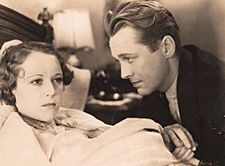
Dunn's Broadway performance attracted the attention of film studio executives. In 1931, Metro-Goldwyn-Mayer (MGM), which conducted its screen tests at Fox Film's Astoria Studios in Queens, New York, called Dunn in for a screen test. A Fox Film employee asked if they could also test Dunn, and had him read a scene from the stage production of Bad Girl. While MGM was not impressed with their result, Fox director Frank Borzage liked Dunn's screen test and wanted to cast him in his upcoming film version of Bad Girl. Dunn signed a film contract with Fox a few days later and relocated to Hollywood; his mother came to live with him the following year.
Dunn made his screen debut in Bad Girl (1931), which catapulted him and co-star Sally Eilers to "overnight fame". A Baltimore Evening Sun review wrote: "Without Dunn, Bad Girl would be just another movie. With him, it's something that provokes chuckles, tears, laughs, sighs and everything else that a nice little movie hopes to provoke". The Los Angeles Times called Dunn's star turn "triumphant", asserting that "no performance has lately equaled the impression made by this rather plain young man, who, aside from having a likable personality, scores a major hit by his ability as an actor".
Fox immediately re-teamed Dunn and Eilers in Over the Hill (1931), followed by Dance Team (1932), Sailor's Luck (1933), and Hold Me Tight (1933). Dunn also played the lead in Sob Sister (1931), Society Girl (1932), and Hello, Sister! (1933). By the end of 1932, Dunn was considered "one of the top 10 box office draws". By the end of 1933, he was being referred to as "America's boy friend".
Shirley Temple co-star

In 1934, Dunn appeared in seven films for Fox. Three of them were also the first three film appearances of six-year-old Shirley Temple. In Stand Up and Cheer!, Dunn and Temple play a father and daughter who perform in one song-and-dance sequence. Rather than have the young girl learn a new routine, the producers had Temple teach Dunn the steps to a tap-dance routine she had learned in her dancing school. Their memorable performance prompted studio executives to immediately cast them in a follow-up film, Baby Take a Bow, a remake of the 1928 silent film Square Crooks. Temple again plays Dunn's daughter in this film, whose title was the name of Dunn and Temple's song in Stand Up and Cheer! Their third film pairing was in Bright Eyes, a vehicle specifically written for Temple and co-starring Dunn as a bachelor pilot and friend of Temple's deceased father who seeks to adopt her. Temple sings "On the Good Ship Lollipop" aboard Dunn's character's airplane in this film. Later that same year, Temple was cast in a small part as Dunn's neighbor in Change of Heart.
Dunn and Temple worked well together. Temple later said that the day they began shooting their first film "was the start of my great romance with Jimmy Dunn". She also appreciated the fact that Dunn treated her as a peer. Dunn admitted that he was initially worried about playing opposite Temple, saying: "All actors dislike working with children. The kids usually steal most of your scenes, or run away with the picture entirely". Despite this, he admired Temple's professionalism and professed to being one of her fans. Temple received top billing in each of their films, and her career soon eclipsed his.
Career decline
During his five years as a contract player with Fox, Dunn appeared in 30 films. In 1935, at the height of his popularity, Dunn broke his studio contract two years before its expiration. He was about to start filming a remake of The Song and Dance Man, but the project was shelved due to Fox's merger with Twentieth Century Pictures. Dunn claimed he was "dissatisfied with pictures recently given me – except those with Shirley Temple". He was reportedly reimbursed for the remainder of his contract.
In 1936, Dunn signed a two-picture deal with Republic Pictures, with Hearts in Bondage being his first starring turn for the studio. With musicals on the wane in the late 1930s, Dunn's career slumped as he found roles in a series of "mediocre comedies and melodramas".
In 1940, Dunn returned to Broadway for an 87-week run in the hit musical Panama Hattie with Ethel Merman, to positive reviews.
Academy Award winner
Dunn had not worked for a major studio for five years when he was called in to screen-test for the role of Johnny Nolan, the dreamy father in the 20th Century Fox production A Tree Grows in Brooklyn (1945). Dunn had returned to Hollywood in 1944 to seek film roles but had not applied for this part for fear of another rejection. However, a friend, actress and dancer Gloria Grafton, urged casting directors involved in the extensive talent search to hire him. Director Elia Kazan said he chose Dunn for the role because drinking had impacted the actor's career, and because he saw "a trace of pain in Dunn's face that indicated he had 'failed the test of life' and [Kazan] wanted to bring that 'pain' to the screen". Dunn reportedly drew from his own experiences for his characterization.
Critics widely hailed Dunn's performance as his "finest". The Pittsburgh Sun-Telegraph wrote: "Mr. Dunn's Johnny Nolan has the mark of greatness about it, and he has never done before, nor ever will again, anything of more sublime conviction".
At the 18th Academy Awards ceremony, Dunn won the Academy Award for Best Supporting Actor for his performance.
Winning the Oscar, however, did not revive his film prospects, and acting jobs were slow in coming. He returned to the role of a father in Killer McCoy (1947) opposite Mickey Rooney, to complimentary reviews. His last film performance for nearly a decade was in the short film A Wonderful Life (1951), produced for the Christian film industry. Dunn appeared in four films in the 1960s, including The Bramble Bush (1960).
Return to the stage
In 1947, largely on the basis of his performance in A Tree Grows in Brooklyn, Dunn was cast as Jamie Tyrone, a man who resorted to drink to forget his unhappy past, in Eugene O'Neill's semi-autobiographical play A Moon for the Misbegotten. Considered the "name" actor in the production, Dunn was given a run-of-the-play contract and $1,000 per week, compared to the $750 per week salary of fellow performer J. M. Kerrigan. During rehearsals, O'Neill was dissatisfied with Dunn's portrayal of Tyrone, a character based on O'Neill's brother, claiming that Dunn "wasn't playing the role with enough gentlemanliness". The director defended Dunn's interpretation of the script. Meanwhile, Dunn felt out of his league playing tragedy rather than comedy. He had never seen an O'Neill play and said his wife had persuaded him to take the part for the "prestige". The production budget was increased by 10% to enable dress rehearsals to take place in New York rather than in the first out-of-town tryout in Columbus, Ohio, in order to accommodate Dunn's poor health. While Dunn's performance garnered critical praise on the tour, he left the production before it reached Broadway.
In 1948, Dunn succeeded James Stewart in Harvey, appearing in 108 performances of the long-running Broadway play. In 1951, Dunn played Willy Loman in Death of a Salesman at the Norwich Summer Theater. In 1964, he played the title role in Finian's Rainbow in a 2-week summer engagement at the Melodyland Theatre in Anaheim, California.
Television career
In 1949, Dunn pursued a new direction as a character actor on television. He guest-starred in dozens of episodes of popular television series in the 1950s through mid-1960s, including Bonanza, Rawhide, Route 66, Ben Casey, and The Virginian. He had a regular role in the popular sitcom It's a Great Life, which aired 78 episodes from 1954 to 1956. Dunn played Earl Morgan, the deadbeat brother-in-law of the main character, Amy Morgan (Frances Bavier), who was always concocting get-rich-quick schemes to interest Amy's tenants, Steve Connors (William Bishop) and Denny Davis (Michael O'Shea). The three male comedians had good rapport and often ad-libbed their lines. The role required Dunn to play slapstick, which he had only done previously on stage.
In 1962, Dunn played a clown in full makeup and costume in an episode of Follow the Sun, and sang "On the Good Ship Lollipop" from his 1934 film Bright Eyes. In 1963 he played the character of P. J. Cunningham, the manager-driver for a music band led by Bobby Rydell, in the unsold Desilu half-hour television pilot Swingin' Together.
Screen persona and recognition
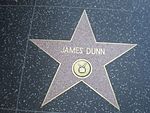
Dunn's smile, described as "sunny", "whimsical", "infectious", and "winning", was often singled out as an asset. The Arcadia Tribune claimed Dunn's smile was "patterned after the one the Prince of Wales uses".
In his Hollywood heyday in the 1930s, Dunn was noted for his "clean-cut good looks and boyish charm". As he matured, The New York Times described Dunn's "trademark" as an "expression of slightly battered wistfulness". The Associated Press characterized Dunn's later screen persona as "a well-meaning type of fellow whom women marry to mother".
Dunn was honored with two stars on the Hollywood Walk of Fame—one for his contributions to motion pictures at 6555 Hollywood Boulevard, and one for his contributions to television at 7010 Hollywood Boulevard. Both were dedicated on February 8, 1960.
Personal life
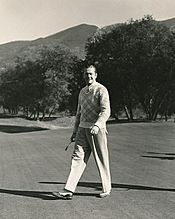
Even after his rise to stardom, Dunn was described as "unaffected and friendly". On the set of Hold Me Tight (1933), he insisted on filling in for an extra who was going home sick and who had confided to Dunn that he couldn't afford to lose his day's pay of $7.50. Author Pete Haynes, a Malibu, California, resident who played with Dunn's adopted son, Billy Pick, in the 1950s, remembers Dunn as "down to earth and friendly toward every person he came in contact with".
Dunn's sense of humor was often evident. To commemorate the leap year of 1936, he announced a $50 prize to the woman who could send him the best proposal, with a $25 prize for the runner-up. He received a total of 10,000 submissions and awarded first prize to a 20-year-old native of Oklahoma, who wrote him a four-page poem. An Associated Press wire photo showed the two sharing a toast at Dunn's studio in January 1937. Dunn awarded the second prize to a woman from Fort Beaufort, South Africa, and sent runner-up gifts to three other American women.
When he was not working, Dunn enjoyed playing golf and flying his airplane. He earned a pilot's license shortly after his arrival in California, having received training from Bob Blair, a charter pilot at Los Angeles Municipal Airport, who described him as "ultra-conservative" in the air. By 1940, Dunn had logged 750 flying hours. While under contract to Fox, however, the studio forbade him from participating in the 1935 Ruth Chatterton Air Derby.
Marriages
Dunn was married three times. His first marriage ended in divorce in 1922. On Christmas Day 1937, Dunn and his fiancée, 17-year-old actress Frances Gifford, flew in his plane to Yuma, Arizona, to be married in a Presbyterian church there and afterwards returned to Hollywood. The couple later starred together in Mercy Plane (1939) and Hold That Woman! (1940). The marriage failed in 1942 as Dunn's career was in decline; their divorce was finalized in 1943. In 1945 Dunn married his third wife, singer Edna Rush, who survived him. Dunn adopted Rush's three-and-a-half-year-old son Billy.
Finances
In the 1930s, Dunn's weekly earnings were in the thousands of dollars; he also charged $5,000 for a personal appearance tour. His mother took charge of his finances and invested most of his earnings in stocks, bonds, real estate, and trust funds, giving him a weekly allowance. As a result, after Dunn left Fox and his career slumped, he had financial security. Upon his 1938 marriage, Dunn's mother gave him control of his portfolio. Thereafter Dunn lost a $40,000 option on a play, Cock of the Walk, that failed to reach Broadway, as well as thousands of dollars in the stock market. He was forced to sell his $50,000 house and move to a two-bedroom apartment in Malibu, from where he commuted to Hollywood. In October 1951, he filed for bankruptcy. However, his mother had reserved one trust fund for him which matured when he turned 50 and paid out $900 per month for life.
Death
Dunn died on September 1, 1967, aged 65, from complications following stomach surgery at Santa Monica Hospital. His funeral service in Santa Monica was attended by some 200 people, including fellow actors. His body was cremated and his ashes strewn at sea.
Filmography
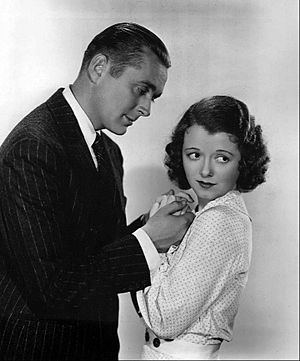
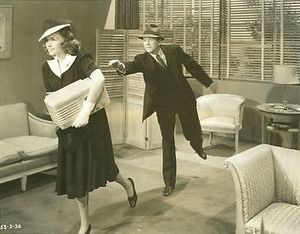
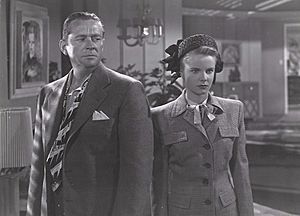
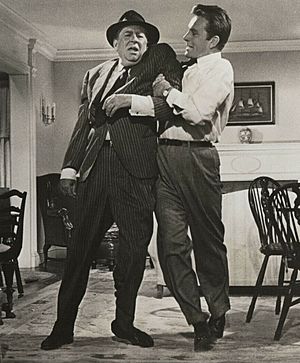
| Year | Title | Role | Notes |
|---|---|---|---|
| 1929 | In the Nick of Time | Short | |
| 1930 | Believe It or Not | Reporter | Short, uncredited |
| Barefoot Days | Short | ||
| Tom Thumbs Down | Short | ||
| The Varsity Show | Short | ||
| 1931 | Retire Inn | Short | |
| Bad Girl | Eddie Collins | ||
| Sob Sister | Garry Webster | ||
| Over the Hill | Johnny Shelby (as adult) | ||
| 1932 | Society Girl | Johnny Malone | |
| Dance Team | Jimmy Mulligan | ||
| Handle with Care | Bill Gordon | ||
| 1933 | Hold Me Tight | Chuck Evans | |
| Hello, Sister! | Jimmy | ||
| The Girl in 419 | Dr. Daniel French | ||
| Sailor's Luck | Jimmy Fenimore Harrigan | ||
| Arizona to Broadway | Smiley | ||
| Jimmy and Sally | Jimmy O'Connor | ||
| Take a Chance | Duke Stanley | ||
| 1934 | Baby Take a Bow | Eddie Ellison | |
| Have a Heart | Jimmie Flaherty | ||
| Bright Eyes | James 'Loop' Merritt | ||
| 365 Nights in Hollywood | Jimmie Dale | ||
| Hold That Girl | Barney Sullivan | ||
| Stand Up and Cheer! | Jimmy Dugan | ||
| Change of Heart | Mack McGowan | ||
| 1935 | George White's 1935 Scandals | Eddie Taylor | |
| Welcome Home | Richard Foster | ||
| The Payoff | Joe McCoy | ||
| The Daring Young Man | Don McLane | ||
| Bad Boy | Eddie Nolan | ||
| 1936 | Two-Fisted Gentleman | Mickey | |
| Don't Get Personal | Bob McDonald | ||
| Come Closer, Folks | Jim Keene | ||
| Hearts in Bondage | Lieutenant Kenneth Reynolds | ||
| Mysterious Crossing | Addison Francis Murphy | ||
| 1937 | We Have Our Moments | John Wade | |
| Venus Makes Trouble | Buzz Martin | ||
| Living on Love | Gary Martin | ||
| 1938 | Shadows Over Shanghai | Johnny McGinty | |
| 1939 | Mercy Plane | "Speed" Leslie | |
| Pride of the Navy | Speed Brennan | ||
| 1940 | Hold That Woman! | Jimmy Parker | |
| Son of the Navy | Malone | ||
| 1942 | The Living Ghost | Nick Trayne | |
| 1943 | The Ghost and the Guest | Webster Frye | |
| 1944 | Leave It to the Irish | Terry Moran | |
| Government Girl | Sergeant Joe Bates | ||
| 1945 | A Tree Grows in Brooklyn | Johnny Nolan | Academy Award for Best Supporting Actor |
| The Caribbean Mystery | Smith | ||
| 1946 | That Brennan Girl | Denny Reagan | |
| 1947 | Killer McCoy | Brian McCoy | |
| 1948 | Texas, Brooklyn & Heaven | Mike | |
| 1950 | The Golden Gloves Story | Joe Riley | |
| 1951 | A Wonderful Life | Henry Wood | |
| 1960 | The Bramble Bush | Stew Schaeffer | |
| 1962 | Hemingway's Adventures of a Young Man | Telegrapher | |
| 1966 | The Oscar | Network executive | |
| 1968 | Shadow Over Elveron | Luke Travers | Television movie |
| Source: | |||
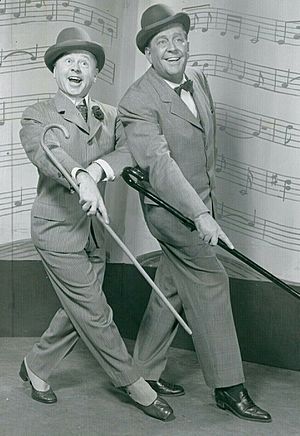
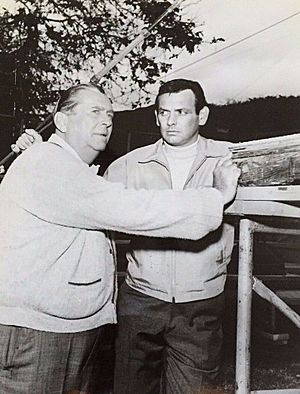
| Year | Title | Role | Notes |
|---|---|---|---|
| 1948 | The Chevrolet Tele-Theatre | Cassidy | Episode: "No Shoes" |
| 1951 | The Garry Moore Evening Show | Guest appearance | October 24, 1951 Acted out a scene from A Tree Grows in Brooklyn with Margaret O'Brien |
| 1954–1956 | It's a Great Life | Earl Morgan | 76 episodes |
| 1954 | Schlitz Playhouse of Stars | Bookkeeper | Episode: "The Treasure of Santo Domingo" |
| 1955 | Studio One | Bookkeeper | Episode: "A Picture in the Paper" |
| Schlitz Playhouse of Stars | Coach Dan McLain | Episode: "Nothing to Do Until Next Fall" | |
| 1956 | Climax! | Eldon Abernathy | Episode: "The Secret of River Lane" |
| 1957 | The Red Skelton Show | Guest appearance | January 29, 1957 |
| Mr. Broadway | Jerry Cohan | May 11, 1957 | |
| Climax! | Episode: "Keep Me in Mind" | ||
| 1958 | Wanted Dead or Alive | Gabe | 1 episode |
| The Nine Lives of Elfego Baca | J. Henry Newman | Several episodes | |
| 1959 | Bonanza | Danny | 1 episode |
| Rawhide | Flood | 1 episode | |
| 1960 | Route 66 | Van Carter | 2 episodes |
| 1961 | The Investigators | Chief Reynolds | Episode: "The Mind's Own Fire" |
| 1962 | The Virginian | Congressman | 1 episode |
| Wagon Train | Winslow | 1 episode | |
| Follow the Sun | Clown | Episode: "Run, Clown, Run" | |
| 1963 | The Fugitive | Bragan | Episode: "Decision in the Ring" |
| Swingin' Together | P. J. Cunningham | Unsold TV pilot | |
| 1965 | Branded | Manning | 1 episode |
| Source: | |||
See also
 In Spanish: James Dunn para niños
In Spanish: James Dunn para niños



